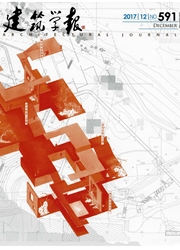
欢迎您!东篱公司
退出

 中文摘要:
中文摘要:
以上海交通大学闵行校区学生宿舍为例,探索了有限条件下既有建筑改造设计的切入点、品质提升策略及其评价方法。针对宿舍家具陈设、空间场景、界面信息及其伴随行为进行综合调研与分析,揭示了宿舍空间再生的基本规律,重点阐述了既有空间信息甄选与重构设计的创新方法。
 英文摘要:
英文摘要:
Taking the students' dormitory on Shanghai Jiaotong University's Minhang campus as an example, this paper studies possible methods to renovate existing buildings with restrictions, strategies to improve architectural quality and methods of assessment. Based on a comprehensive investigation and analysis of furniture arrangement, spatial scenes, interface information and consequential behaviors, this paper reveals the basic design logic of spatial regeneration of dormitories, with an emphasis on innovative methods of selecting spatial information and reconstructing existing buildings.
 同期刊论文项目
同期刊论文项目
 同项目期刊论文
同项目期刊论文
 期刊信息
期刊信息
